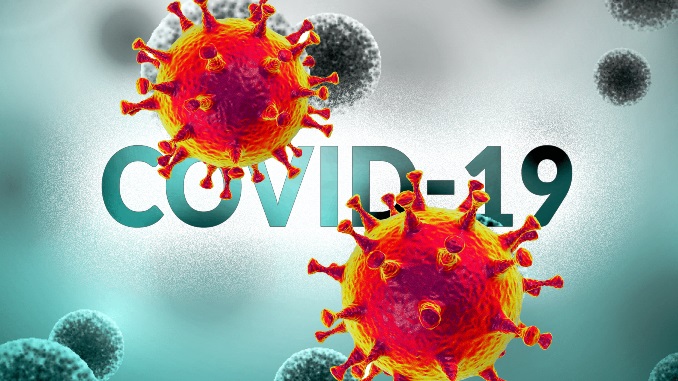GENEALOGY OF COVID-19 AND IMPENDING PANDEMICS OF THE FUTURE

The ongoing debate over the origins of the COVID-19 has lately been garnering a significant amount of attention and interest. The contest has been relentlessly growing during the last few days with the emergence of new findings. For instance, a recent study by British professor Angus Dalgleish and Norwegian scientist Dr Birger Sorensen has disclosed that the Chinese scientists may have created the virus in a lab in Wuhan. The Chinese probably took a natural coronavirus “backbone” from Chinese cave bats and spliced the spike protein genes into their genome. And turned it into a deadly and highly transmissible Covid-19 virus in its current form. An article on Coronavirus published by me on February 4, 2020, in the Deccan Chronicle titled “A Natural Mutant or a Manmade Bioweapon” echoed what research is revealing today. Former US President Donald Trump, since the beginning, has been supporting the theory that the virus might have escaped from a bio-lab in China. Nicholas Wade, a former science writer and editor for the New York Times, has insisted that the escape scenario of the virus from the lab lends a more valid explanation than the natural emergence scenario. US President Joe Biden last week mandated the US intelligence agencies to “redouble” their endeavours in investigating the emergence of the deadly COVID-19 pandemic after a US intelligence report divulged that several researchers at China’s Wuhan Institute of Virology (WIV) had fallen ill, leading to their hospitalisation in November 2019. Likewise, the British intelligence agencies are now reportedly presuming the feasibility of a coronavirus leak from a Chinese laboratory and are therefore demanding a comprehensive investigation by WHO.
A laboratory leak of a deadly pathogen sparking a pandemic is not assumptive. Quite recently, several such bio-mishaps have occurred with potentially lethal repercussions. In 1977 the H1N1 human influenza pandemic was accidentally released due to bungling in a Chinese lab that enabled the virus to incite a pandemic. The virus quickly disseminated itself worldwide and had an infection rate of 20% to 70% among those exposed. Fortunately for us, the virus could not impact us much as it could cause only mild illness and few fatalities.
Between 1963 and 1978, three accidental release of smallpox samples from two different laboratories primarily resulted from mishandling and bad practices in the lab. The outbreaks caused at least 80 deaths. Similarly, in 1995 the Venezuelan equine encephalitis (VEE) virus escaped from a lab, due to which 10,000 people in Venezuela and 75,000 people in Colombia fell ill, resulting in 311 deaths and 3,000 cases of neurological complications. Further, in 2003, Severe Acute Respiratory Syndrome (SARS) caused a global epidemic resulting in 8,000 infections and 774 fatalities across 29 countries. Subsequently, SARS virus, because of negligence and human error, escaped the laboratories six times of which four times from Beijing and once each from Taiwan and Singapore.
Likewise, in March of 2013, authorities at a high-security government lab in Texas announced the loss of a vial containing Guanarito virus, which causes “bleeding under the skin, in body cavities such as the mouth, eyes or ears”. The authorities have now entrusted the matter to the FBI for investigation. Shortly, in the following year at the Pasteur Institute in Paris, over a thousand vials containing the SARS virus went missing. Hundreds of such episodes continue to happen every year, though not all involve potentially pandemic pathogens.
When the FDA in 2014 decided to move to a new office, they found hundreds of unclaimed vials of virus samples in a cardboard box in the corner of a cold storage room. It so emerged that six of them were vials of smallpox. No one had any knowledge of their existence there. They had been lying there since the 1960s. This incident grabbed attention because they were smallpox virus samples.
If such vials were to fall into the hands of the wrong person, the consequences could be disastrous. We can witness the marvellous portrayal of the devastating consequences of a single act of bio-terror by a single man in the film titled “Smallpox 2002”. In the movie, an anonymous terrorist, who somehow acquires a smallpox culture derivative of the former Soviet Union’s bioweapons project, intentionally infects himself and goes around New York City. Within a few days, unsuspecting travellers flying out of New York airports spread the infection worldwide, causing a pandemic across the globe that is later won against but not before it exterminates 60 million people.
Science is accelerating so rapidly that the cost of chemically synthesising a DNA strand is quickly plummeting at an exponential rate. It was $20 per base in 2000; it costs less than ten cents per base today. Genetic engineers who had to manipulate DNA physically can now do it digitally due to a newly emerging field called Synthetic Biology. Today, there are online print bio-marketplaces where one can mail order a DNA sequence by FedEx; hence bio-criminals or terrorists don’t have to count on living contagions anymore. They can design their destructive bioweapons at home due to advances and discoveries in gene-sequencing and synthetic biology.
We recently saw an illustration of how this would transpire when investigators in the Netherlands and the United States modified the genetic code of bird flu or avian influenza virus (H5N1) to make it more lethal. Though the bird flu has a 70 per cent fatality rate, human to human transmission of the virus is not possible. But by dabbling with the DNA and causing merely four genetic mutations, the Dutch-American team could not only generate a much more contagious strain with enhanced transmissibility to human beings but also transform the virus into an incredible bio-weapon. Although the scientists’ original goal was to study how quickly H5N1 might evolve to prevent its spread, the genetically altered strain proved that, if released, it was capable of causing a global epidemic.
The Johns Hopkins Center for Health in May of 2018 executed a table-top exercise envisioning a scenario in which specialists in pandemic response and national security came to grips with a fictitious virus developed by a terrorist group called “Clade X” to depopulate the earth by intentionally disseminating the infectious virus in various parts of their world. “Clade X” had deadly genes of the Nipah pathogenic virus cloned into a benign human parainfluenza virus. The research uncovered that the pandemic emanating from the release had resulted in simulated casualties of 900 million people within a year as authorities battled to contain the social and economic chaos until they could make a vaccine. This exercise showed that synthetic organisms could provoke an epidemic or a pandemic for which we are not prepared. It also indicated that we could deploy the same synthetic biology tools which the terrorists are using for causing harm to fight diseases by exploiting the technology for the creation of better medicines, vaccines, and diagnostics.
Synthetic biology is helping man play God by being able to engineer new organisms. But, trespassing nature’s sacred domain could result in reprisal and tremendous destruction. Proper human judgement armed with foresight and cautionary planning, along with the realisation of the underlying spirituality of mankind, is what can save us from nature’s retaliation because of rapid and reckless innovation.
 Dr.K. Jayanth Murali is an IPS Officer belonging to 1991 batch. He is borne on Tamil Nadu cadre. He lives with his family in Chennai, India. He is currently serving the Government of Tamil Nadu as Additional Director General of Police, Armed Police.
Dr.K. Jayanth Murali is an IPS Officer belonging to 1991 batch. He is borne on Tamil Nadu cadre. He lives with his family in Chennai, India. He is currently serving the Government of Tamil Nadu as Additional Director General of Police, Armed Police.


